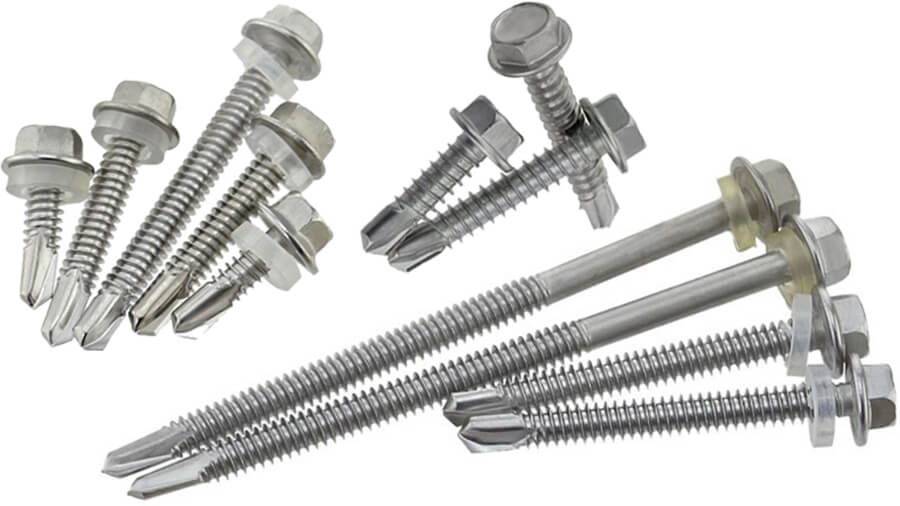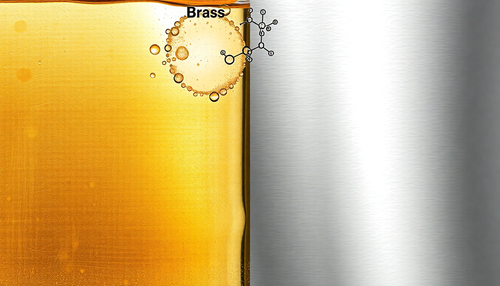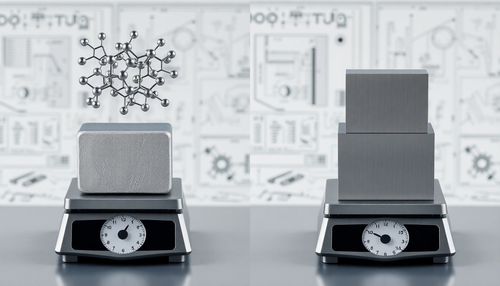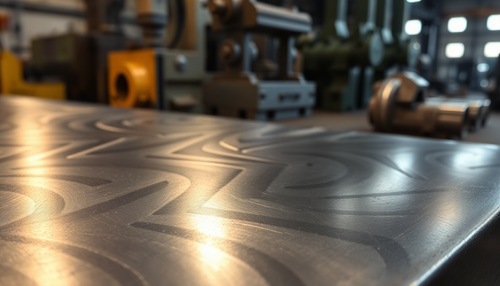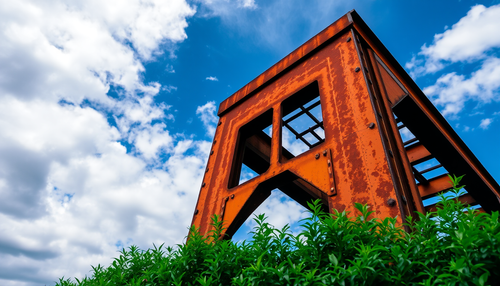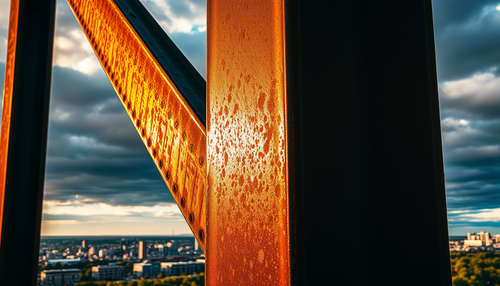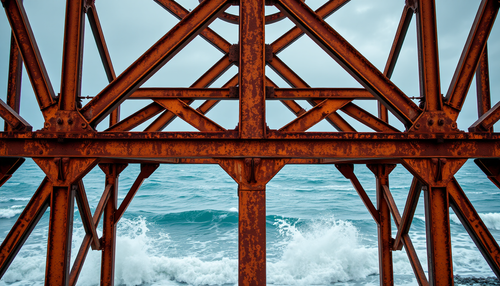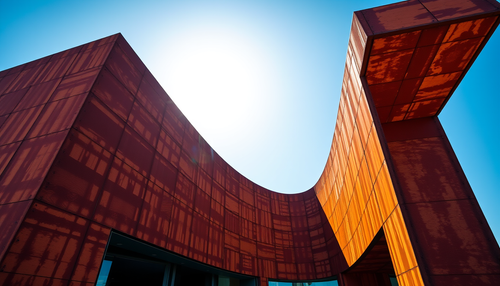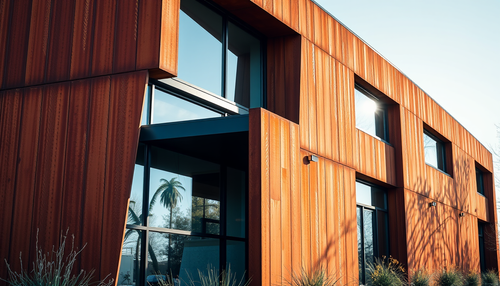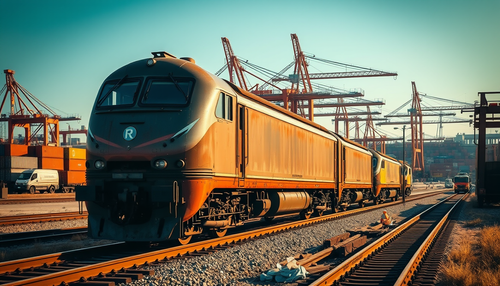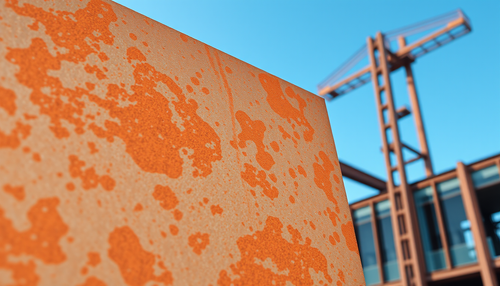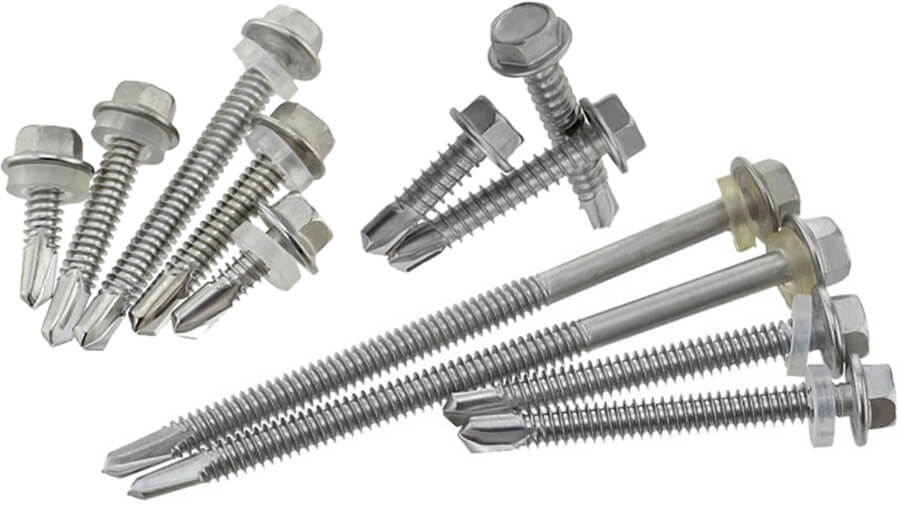
Stainless steel AISI 410, SS410 (UNS S41000)
AISI 410 stainless steel is one of the most commonly used martensitic stainless steels. It contains about 12% Cr and therefore offers moderate corrosion resistance. Unlike austenite like AISI 304 and AISI 316, martensite like grade 410 is magnetic and can be hardened by heat treatment like carbon steel and low alloy steel. SS410 has good tensile strength, creep and fatigue resistance and other mechanical properties, mainly used in steam turbines, jet engines and gas turbines.
Type 420 is basically a high carbon version of SS410 that offers greater strength. Ferritic stainless steel 430 contains a higher chromium content, therefore it has greater corrosion resistance.
Datasheet and specifications
The following tables and lists provide the data sheet and specifications of 410 stainless steel, including chemical composition, physical and mechanical properties, heat treatment, welding, etc.
Chemical composition
The chemical composition of SS 410 material is listed in the following table based on casting analysis.
Datasheet 1, The table below shows the composition of AISI 410 stainless steel.
| Chemical Composition Type 410,% | ||||||||
| ASTM/SAE | AISI (UNS) | W | Yes, ≤ | Mn, ≤ | P, ≤ | S, ≤ | Cr | Ni, ≤ |
| ASTM A276/A276M | 410 (UNS S41000) | 0.08-0.15 | 1.00 | 1.00 | 0.040 | 0.030 | 11.5-13.5 | – |
| ASTM A580/A580M | 0.15, ≤ | 1.00 | 1.00 | 0.04 | 0.03 | 11.5-13.5 | – | |
| ASTM A959 | ||||||||
| ASTM A479/A479M | ||||||||
| ASTM A314 | ||||||||
| ASTM A240/A240M | 0.08-0.15 | 1.00 | 1.00 | 0.04 | 0.03 | 11.5-13.5 | 0.75 | |
| ASTM A473 | 0.15, ≤ | |||||||
| SAE J405 | 0.15, ≤ | |||||||
Grades:
- ASTM A276/A276M : Standard Specification for Stainless Steel Bars and Shapes
- ASTM A240/A240M : Chromium and chrome-nickel stainless steel plates, sheets and strips for pressure vessels and general applications
- ASTM A580/A580M : Stainless Steel Wire
- ASTM A479/A479M : Stainless steel bars and shapes for use in boilers and other pressure vessels
- ASTM A959 : Standard Guide for Specification of Harmonized Standard Grade Compositions for Wrought Stainless Steels
- ASTM A473 : Stainless Steel Forgings
- ASTM A314 : Standard Specification for Stainless Steel Billets and Bars for Forging
- SAE J405 : Chemical Composition of SAE Forged Stainless Steels
Properties of AISI 410 stainless steel
The data sheets below list the properties of grade 410 stainless steel, including physical properties and mechanical properties.
Physical properties
The physical properties of SS 410 stainless steel are listed in the table below, such as density, melting point, specific heat, electrical resistivity, modulus of elasticity (modulus of elasticity), thermal conductivity and coefficient of thermal expansion (CTE).
Datasheet 2, properties of AISI 410 stainless steel – 1.
Grades:
- 10 -6 ·K -1 = 10 -6 /K
- 1Ω mm²/m = 1 μΩ m
- 1 g/cm3 = 1 kg/dm3 = 1000 kg/m3
- 1 GPa = 1kN/mm2
- 1 MPa = 1 N/mm2
| Physical and thermal properties of SS 410 | |
| Density, g/cm3 (lb/in3) | 7.9 (0.29) |
| Melting point, °C (°F) | 1480-1530 (2700-2790) |
| Magnetic permeability | 700-1000 |
| Specific heat capacity, J/kg·K (Btu/lb ·°F) | 460 (0.11) at 20°C (68°F) |
| Electrical resistivity, μΩ·m | 0.57 at 20°C (68°F) |
| Elastic Modulus (Modulus of Elasticity), Gpa (10 6 psi) | 200 (29.0) |
| Young's Modulus, Gpa (10 6 psi) | 190-210 (27.6-30.4) |
| Thermal diffusivity, mm2/s (in2/s) | 6.7 (0.01) at 20 – 100 °C (68 – 212 °F) |
| Thermal conductivity, W/m·K (Btu/ft · h ·°F) | 24.9 (14.4) at 100°C (212°F) |
| 28.7 (16.6) at 500°C (932°F) | |
| Coefficient of thermal expansion, 10 -6 /K (μin./in. ·°F) | 9.9 (5.5) at 0-100°C (32-212°F) |
| 11.4 (6.3) at 0-315°C (32-600°F) | |
| 11.6 (6.4) at 0-538℃ (32-1000°F) | |
Mechanical properties
The mechanical properties of AISI 410 stainless steel are given in the data sheet below, including tensile strength, yield strength, elongation, area reduction, Brinell and Rockwell hardness, Charpy impact test, etc.
Datasheet 3, Properties of Type 410 Stainless Steel – 2.
| Mechanical Properties ASTM A276 Type 410 | ||||||
| ASTM | AISI (UNS) | Tensile strength, Mpa (ksi), ≥ | 0.2% yield strength, Mpa (ksi), ≥ | Stretch by 2 in. (50 mm) or 4D, ≥% | Area reduction, ≥% | Condition and finish |
| ASTM A276/A276M | 410 (UNS S41000) | 480 (70) | 275 (40) | 20 | 45 | A, hot finished |
| 480 (70) | 275 (40) | 16 | 45 | A, cold finished | ||
| 690 (100) | 550 (80) | 15 | 45 | T, hot finished | ||
| 690 (100) | 550 (80) | 12 | 45 | T, cold finished | ||
| 830 (120) | 620 (90) | 12 | 40 | H, hot finished | ||
| 830 (120) | 620 (90) | 12 | 40 | H, cold finished | ||
| Mechanical properties | |||||||
| ASTM | AISI (UNS) | Tensile strength, Mpa (ksi), ≥ | 0.2% yield strength, Mpa (ksi), ≥ | Stretch by 2 in. (50 mm) or 4D, ≥% | Brinell hardness, HBW | Rockwell hardness | Cold Curve |
| ASTM A240/A240M | 410 (UNS S41000) | 450 (65) | 205 (30) | 20 | 217 | 96 HRBW | 180 |
| Mechanical properties | ||||||
| ASTM | AISI (UNS) | Tensile strength, Mpa (ksi), ≥ | 0.2% yield strength, Mpa (ksi), ≥ | Stretch by 2 in. (50 mm) or 4D, ≥% | Area reduction, ≥% | Condition and finish |
| ASTM A580/A580M | 410 (UNS S41000) | 485 (70) | 275 (40) | 20 | 45 | A, hot finished |
| 485 (70) | 275 (40) | 16 | 45 | A, cold finished | ||
| 690 (100) | 550 (80) | 12 | 40 | T, cold finished | ||
| 830 (120) | 620 (90) | 12 | 40 | H, cold finished | ||
Notes for condition:
- A – Annealed.
- H – Hardened and tempered at a relatively low temperature.
- T – Hardened and tempered at a relatively high temperature.
| Mechanical properties | |||||||
| ASTM | AISI (UNS) | Tensile strength, Mpa (ksi), ≥ | 0.2% yield strength, Mpa (ksi), ≥ | Stretch by 2 in. (50 mm) or 4D, ≥% | Area reduction, ≥% | Brinell hardness, HBW | Illness |
|
ASTM A473; A479/A479M |
410 (UNS S41000) | 485 (70) | 275 (40) | 20 | 45 | 223 | Annealed |
| 485 (70) | 275 (40) | 20 | 45 | 223 | 1 | ||
| 760 (110) | 585 (85) | 15 | 45 | 269 | two | ||
| 895 (130) | 690 (110) | 12 | 35 | 331 | 3 | ||
| Type 410 hardened materials must be normalized or liquid hardened from a minimum temperature of 925°C (1700°F) and then maintained at the temperature in accordance with conditions 1, 2, 3. For each increase in 1 in. cross section, the time must be increased by at least 1 hour. | |||||||
| Mechanical and Impact Properties | |||||||
| Type UNS or AISI | Charpy V, J Notch Impact Strength (ft·lbf) | Rockwell hardness | Yield strength, 0.2% displacement, MPa (ksi), ≥ | Ultimate tensile strength, MPa (ksi), ≥ | Elongation by 50.8 mm (2 in.), % | Area reduction, ≥% | Illness |
| 410 (UNS S41000) | 76 (56) | 43 HRC | 1089 (158) | 1337 (193) | 17 | 62 | Oil quenched at 1010 °C (1850 °F) and tempered at 250 °C (500 °F) |
| 52 (38) | 26 HRC | 724 (105) | 827 (120) | 20 | 63 | Oil quenched at 1010°C (1850°F) and tempered at 593°C (1100°F) | |
Grade 410 Stainless Steel Heat Treatment
Heat treatment of grade 410 stainless steel includes annealing, hardening, tempering and stress relieving.
girdling
Annealing temperature for forged 410 stainless steel:
- Process annealing (subcritical): Air cooled to a temperature of 650-760°C (1200-1400°F). Maximum smoothness can be obtained by heating to the temperature at the upper end of the range. Rockwell hardness: 86-92 HRB.
- Full Annealing: Soak completely at a temperature in the range of 830-885°C (1525-1625°F); cool the oven to 790°C (1455°F), continue cooling to 595°C (1100°F) at a rate of 15-25°C/h (27-45°F/h); cool air to room temperature. Rockwell hardness: 75-85 HRB.
- Isothermal Annealing: Heat to 830-885°C (1525-1625°F); hold 6 hours at 705°C (1300°F). Rockwell hardness: 85 HRB.
Hardening
Heating to the austenitizing temperature of 925-1010°C (1700-1850°F), the normal time in the temperature range is 30-90 minutes, the quenching agent is air or oil (for parts with thickness greater than 6, 4 mm (0.25 in.), oil quenching must be used; martempering baths at 150-400 °C (300-750 °F) can replace oil quenching.);
- Tempering temperature: 205-370°C (400-700°F), ultimate tensile strength is 1105-1515 MPa (160-220 ksi), Rockwell hardness is 38-47 HRC.
- Tempering temperature: 565-605°C (1050-1125°F), ultimate tensile strength is 760-965 MPa (110-140 ksi), Rockwell hardness is 25-31 HRC. (It is not recommended to temper in the temperature range of 370-565°C (700-1050°F) as this will result in inferior and unstable impact performance and poor resistance to corrosion and stress corrosion cracking.)
Forging
The typical forging temperature range of SS410 is 900-1200°C (1650-2200°F).
Heat resistance
Maximum air service temperatures
- Intermittent service: 815°C (1500°F)
- Continuous service: 705°C (1300°F)
Welding
Martensitic stainless steels are the most difficult stainless steels to weld because their chemical balance makes them harder, stronger, and less ductile during heat treatment. These same metallurgical changes are caused by the heat of welding.
AISI 410 stainless steel can be welded under annealing, hardening, quenching and tempering conditions, and often produces satisfactory welds without post-weld heat treatment, but preheating is required. Generally preheated to 260°C (500°F); Welded at this temperature; Slow cooling below 65°C (150°F); Temperament.
High carbon steels (such as grades 420 and 440A) generally require post-weld heat treatment.
| Filler metal for arc welding | |
| Steel | Electrode or welding rod |
| 410 | E/ER410, E/ER308, E/ER309 |
For arc welding of type 410 stainless steel, the following are recommended (for reference only):
- During the welding process, preheat to 250°C (480°F) and maintain this temperature.
- Use austenite electrodes such as AWS E/ER308 or 309. If stronger welding is required, AWS E/ER410 should be used.
- After welding, allow the joint to cool to the preheat temperature, which is 250°C (480°F).
- Before allowing the joint to cool to room temperature, temper at 720°C (1330°F), and for every 1 inch of thickness added, the time increases by at least 1 hour.
- Cool to room temperature.
Forms
Type 410 steel is the general-purpose base steel used for steam valves, pan valves, pump shafts, turbine blades, screws, and miscellaneous parts requiring corrosion resistance and moderate strength up to 540°C (1000°F). .
Equivalent material SS 410
Grade 410 stainless steel equivalent to Chinese GB, ISO, Japanese JIS and European EN standard (Germany DIN EN, British BSI…).
Note: DIN 17440 has been replaced by DIN EN 10088-2 and DIN EN 10088-3.
| Material equivalent to AISI 410 | |||||||||||||||||||||
| USA | European | Germany | China | Japan | ISO | Australia | India | Russia | Korea | ||||||||||||
| Standard | Note (UNS) | Standard | Note | Standard | Class (Steel Number) | Standard | Class (Steel Number) | Standard | Note | Standard | Note | Standard | Note (ISO number) | Standard | Note | Standard | Note | Standard | Note | Standard | Note |
| AISI; SAE; ASTM |
410 (UNS S41000) | SAE AMS 5504 | 12.5 Cr (410) | EN 10088-1; EN 10088-2; EN 10088-3 | X12Cr13 (1.4006) | DIN 17440 | X12Cr13 (1.4006) | GB/T 1220; GB/T 3280 |
1Ch13; 12Cr13 (new designation) |
JIS G4304; JIS G4304; JIS G4305 |
SUS410 | ISO 15510 | X12Cr13 (4006-410-00-I) | ||||||||
Related material: SS 304L, 316L, 303, 1.4301 (X5CrNi18-10), X5CrNiMo17-12-2 (1.4401)

